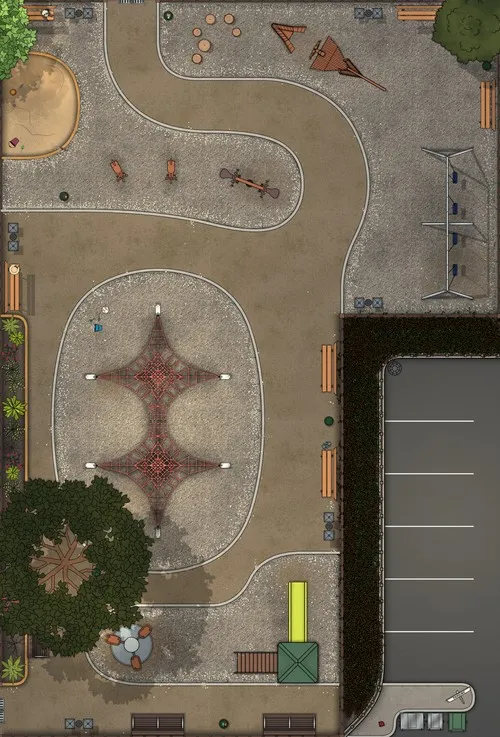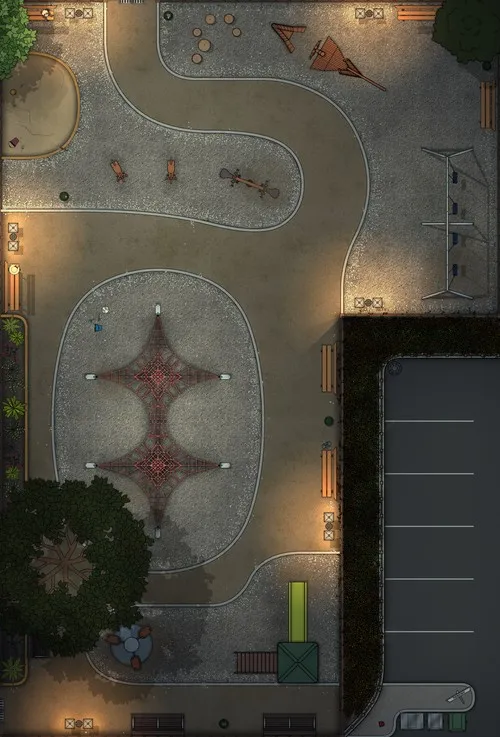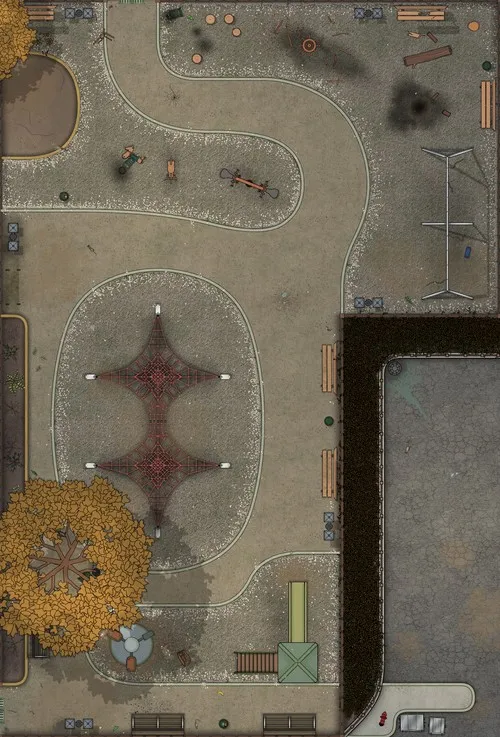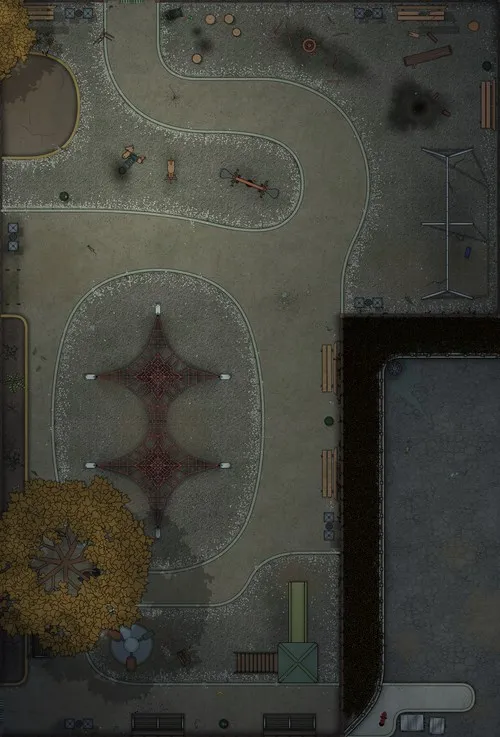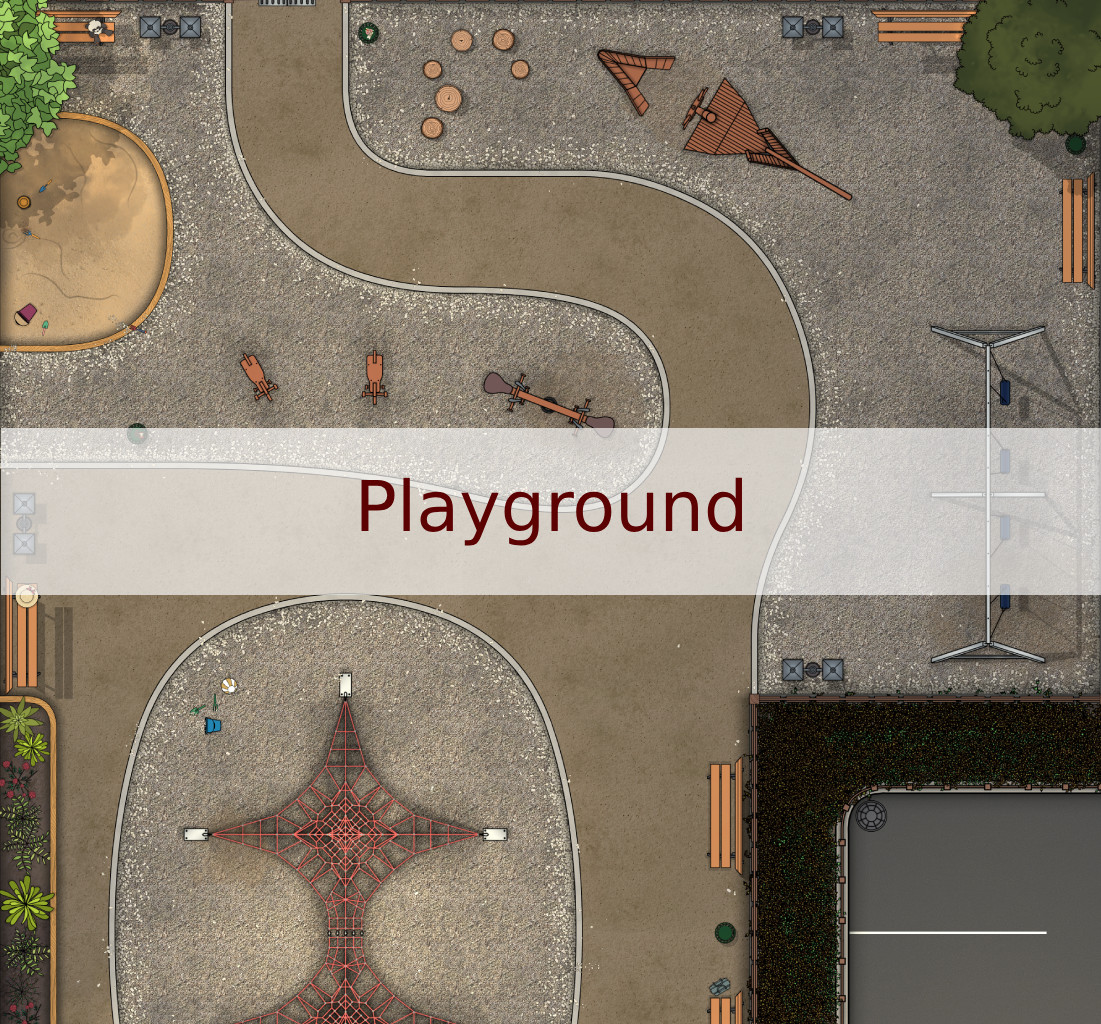What games did the children play before they vanished one by one? Why do the swings still move on windless nights, their chains creaking in perfect rhythm? What lurks beneath the colorful slide where parents found only torn clothing? Which shadows dance between 'the spider' when no child casts them? Why do the merry-go-round's painted horses seem to watch you with eyes that weren't there yesterday?
Follow Cthulhu Architect on BlueSky!Consistency is the playground of dull minds.
― Yuval Noah Harari, Sapiens: A Brief History of Humankind
Margaret first noticed the playground during her evening jogs, tucked behind a grove of dying elm trees like a secret the neighborhood had forgotten. The equipment gleamed with fresh paint—primary colors so vivid they seemed to pulse against the twilight sky. Strange, she thought, considering the nearest houses were blocks away.
She began stopping there, drawn by an inexplicable comfort the empty swings provided. The silence was profound, almost sacred. Margaret would sit and watch the sun disappear behind the treeline, feeling a peculiar peace settle over her troubled mind. Her divorce proceedings seemed manageable here. Her mother’s failing health felt distant.
On the seventh visit, she noticed the chalk drawings. Hopscotch squares numbered in a sequence that made her head swim: 1, 3, 9, 27, 81. A child’s attempt at mathematics, surely, but the progression continued far beyond where any hopscotch should end. The final number stretched across the entire width of the playground, written in symbols that weren’t quite numerals.
The next evening brought fog, and through it, Margaret glimpsed movement on the playground equipment. Small figures scrambled across the jungle gym, their laughter echoing strangely in the mist. When she called out, the sounds stopped instantly. The fog cleared to reveal empty metal bars, still warm to the touch despite the autumn chill.
Margaret began bringing her laptop, working under the single streetlight that illuminated the space. The playground felt alive around her—not malevolent, but expectant. Waiting. The painted animals on the merry-go-round seemed to shift positions when she wasn’t looking directly. The seesaw moved in gentle rhythms, as if invisible children played eternal games.
She researched the land’s history obsessively, finding only a single newspaper clipping from 1923: “Children’s Vanishing Puzzles Authorities.” Seven youngsters had disappeared during a school picnic. Their bodies were never found, but witnesses reported hearing laughter from the woods for weeks afterward. The article mentioned strange symbols carved into nearby trees—symbols that matched the chalk numbers on the hopscotch court.
The revelation should have frightened her away, but Margaret felt only a deepening connection to the place. She understood now why the playground had been built here, why it maintained itself with no visible caretakers. The children needed somewhere familiar to play, somewhere the adults would eventually find them. On her final visit, as the autumn moon cast long shadows across the equipment, Margaret finally saw them clearly—seven small figures beckoning from the spinning roundabout, their faces bright with eternal joy.
Her phone was found the next morning beside the empty swings, still recording. The audio contained forty-seven minutes of laughter and the rhythmic creaking of playground equipment, though the investigating officers noted no wind that night. Margaret’s car remained in the parking area for weeks, gathering leaves and patience, until the city finally had it towed.
